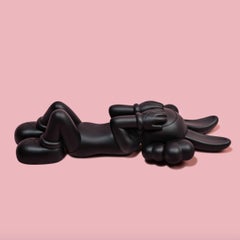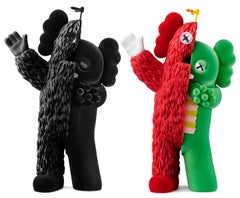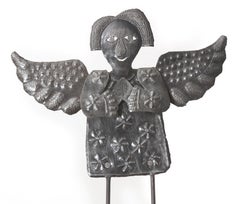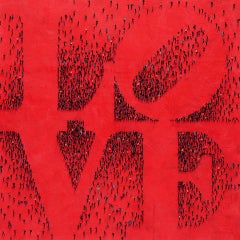More Art
Artist Comments
A geometric outline of a woman's skull and a house contrast against a pale blue sky. The painting features vibrant and varied tones, with blocks of color outlin...
21st Century and Contemporary Surrealist More Art
Acrylic
21st Century and Contemporary Contemporary More Art
Plastic
21st Century and Contemporary Pop Art More Art
Vinyl, Nylon
21st Century and Contemporary Pop Art More Art
Resin, Vinyl
Early 2000s More Art
Steel
21st Century and Contemporary More Art
Mixed Media
21st Century and Contemporary More Art
Paper
2010s Conceptual More Art
Lenticular
21st Century and Contemporary Abstract More Art
Marble
Mid-19th Century Qing More Art
Silk
21st Century and Contemporary More Art
Canvas
21st Century and Contemporary More Art
Canvas
21st Century and Contemporary More Art
Canvas
1980s Modern More Art
Steel
Early 2000s Contemporary More Art
Lithograph, Offset
1960s Pop Art More Art
Paint, Paper
21st Century and Contemporary Pop Art More Art
Resin, Vinyl
21st Century and Contemporary Pop Art More Art
Resin, Vinyl
Artist Comments
A woodland painting captures the brilliant sunlight playing on the rock formations of a rise in the woods near the artist Onelio Marrero's home. The patches of ...
21st Century and Contemporary Impressionist More Art
Oil
Mid-20th Century Other Art Style More Art
Mixed Media
1980s Contemporary More Art
Lithograph, Offset
2010s Contemporary More Art
Fabric, Textile, Tapestry, Linen, Thread
21st Century and Contemporary American Realist More Art
Bronze
1950s Surrealist More Art
Lithograph
1980s Contemporary More Art
Lithograph
1980s Contemporary More Art
Lithograph, Offset
20th Century More Art
Stencil
1960s More Art
Charcoal
1960s Pop Art More Art
Paint, Paper, Pen, Pencil
1960s Pop Art More Art
Film
1960s Pop Art More Art
Mixed Media
2010s Contemporary More Art
Enamel
2010s More Art
Fabric
21st Century and Contemporary Photorealist More Art
Oil, Board
2010s New Media More Art
Plywood, Lacquer, Oil
2010s Abstract More Art
Canvas, Oil
21st Century and Contemporary Academic More Art
Paper, Charcoal
1980s Surrealist More Art
Paper
21st Century and Contemporary Pop Art More Art
Resin, Vinyl
21st Century and Contemporary Pop Art More Art
Resin, Vinyl
1980s American Impressionist More Art
Oil, Panel
1980s Pop Art More Art
Paint, Paper, Pen, Pencil
1990s Contemporary More Art
Lithograph, Offset
1980s Contemporary More Art
Lithograph, Offset
2010s Pop Art More Art
Wood, Digital
1950s Post-War More Art
Ceramic, Clay, Earthenware, Glaze
2010s Abstract Expressionist More Art
Paint, Paper, Oil Crayon, Mixed Media, Wax
Early 20th Century Art Nouveau More Art
Blown Glass
1980s Contemporary More Art
Silk, Screen
Early 2000s Contemporary More Art
Lithograph, Offset
Artist Comments
Fading sunlight casts warm orange hues across the mountain, while cool pastel tones settle in the shadows and desert brush below. In the foreground, a mix of pl...
21st Century and Contemporary Expressionist More Art
Watercolor
1980s Contemporary More Art
Lithograph, Offset
21st Century and Contemporary Contemporary More Art
Thread, Found Objects, Photographic Paper
20th Century Modern More Art
Tapestry, Wool
2010s Other Art Style More Art
Plastic
2010s Modern More Art
Bronze
21st Century and Contemporary More Art
Stoneware
1960s Abstract More Art
Canvas, Oil
Early 20th Century Art Nouveau More Art
Blown Glass
2010s Abstract More Art
Leather, Textile, Linen, Wood





